The same cartridges only in profile
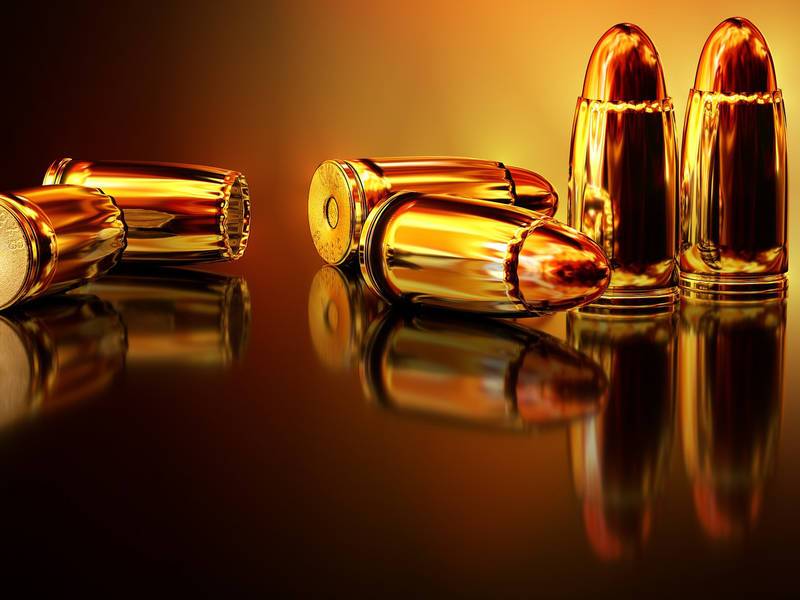
The armed forces of many countries are studying small weapon the next generation is best suited to conduct offensive and defensive tasks across the entire spectrum of the future operational space, and the industry offers alternative options to increase mortality and increase the mobility of its soldiers on the battlefield.
Due to the fact that any transition from widely used types of ammunition to existing small arms, for example, 9x19 mm, 5.56x45 mm and 7.62x51, is associated with huge costs for procurement and logistics, in the short and medium term, few armed forces will dare to go far from existing NATO standards.
For example, over the past couple of years, many small arms procurement programs have been implemented in the world, clearly illustrating that armies adhere to these calibers of the NATO standard in their next generation assault rifle requirements.
Among them is the French army, which in September 2016 announced a contract with Heckler & Koch (H&K) worth 168 million euros, providing for the replacement of standard FAMAS F1 assault rifles with HK416F rifles in 5.56x45 mm caliber under the Arme Individuelle Future (AIF) program.
In April 2017, the German armed forces issued a request for proposals for the System Sturmgewehr Bundeswehr (SSB) program, which provides for the replacement of H&K G36 5.56x45 mm assault rifles with a system of the same caliber. According to official documents, up to 2019 rifles should be purchased between 2026 and 120000, which indicates a cloudless future for this caliber.
Finally, in July 2017, Estonia announced its plans for a program for the purchase of small arms caliber 5.56x45 mm and 7.62x51 mm for infantry brigades, as well as law enforcement forces worth 75 million euros.
Meanwhile, all attention is directed to any actions of the United States related to the departure from NATO standard ammunition, although this process is currently limited only to the activities of the US Special Operations Forces Command (USSOCOM).
According to the directive of the Deputy Chief of Staff of the Ground Forces, General Daniel Ellin, the army should begin to consider the possibility of purchasing the next generation 7.62XXNNXX caliber rifle for the platoons and melee units on a regular basis (and not on the fixed procurement practices for temporary emergency requirements).
A similar transition was launched by the British army in recent years of operations in Afghanistan, when a combination of an assault rifle and a sniper rifle of 5.56xXNNXX mm and 45x7.62 mm calibers was needed so that it could work on the enemy, both at long and short distances. As a result, it was decided to purchase a L51A129 Sharpshooter Rifle sniper rifle, equipped with an 1xXNNXX Trijicon Advanced Combat Optical Gunsight (ACOG) riflescope.
However, this does not mean that recognized calibers, including standard NATO ammunition, are not updated or upgraded.
Development of next generation improved ammunition
According to the company BAE Systems, in June 2016, the first cartridge from the next-generation series of cartridges with improved High Performance (HP) performance, HP 7.62x51 mm, which was adopted by the British special forces in 2015, was introduced. The cartridge is currently available for overseas customers.
Craig Fennel, head of ground systems programs at BAE Systems, explained: “Compared to NATO’s standard rounds, this cartridge greatly increases the possibility of hitting protected targets, such as lightly armored vehicles and aircraft, at extended ranges. The HP cartridge was developed to meet the new requirements defined by the British Department of Defense. As part of the cooperation agreement between the Ministry of Defense and BAE Systems, engineers from the new cartridge production at Redway Green worked on it, where the cartridge is currently being mass-produced. It is compatible with all other NATO weapons caliber 7.62 mm. "
According to BAE Systems, the HP 7.62x51 mm chuck is distinguished by a hardened, pointed tip, a longer bullet profile and a new powder charge, which provides improved armor penetration and accuracy when firing on “hardened” targets, including 3,5 mm steel sheet.
Fennel said that the HP version has a “double range” than the general standard 7,62-mm cartridge, which, according to some, has increased the possibility of destruction from 500 to 1000 meters.
In addition, Fennel noted that the company BAE Systems is also developing a “product with a reduced cost,” which was designated the Improved 7.62 Ball Round Round mm; In his opinion, the cartridge will be able to offer "a significant improvement over standard ammunition."
Finally, BAE Systems is also ready to introduce another member of this family, the Enhanced Performance (EP) cartridge 5.56x45 mm. This development emerged, including thanks to 200’s million pound sterling investment in the Redway Green plant, which allows the company to respond to the emerging needs of theaters of war in “very tight deadlines”.
The 5.56 mm variant, already available in the global market, was created with the aim of increasing the capabilities in the fight against lightly armored targets. The new cartridge company BAE Systems, developed in collaboration with the British Defense Academy, has a hardened steel core in contrast to the existing options with a pointed tip and lead core. However, according to Fennel, the cartridge has the same dibasic powder charge and caps of the “Boxer” type, like the previous versions.
The bullet of the EP 5.56x45 mm cartridge punches a steel sheet 3,5 mm thick from a distance of approximately 500-800 meters; this cartridge can also pierce "more durable objects", for example, 8-mm steel sheet and 5-mm sheet of rolled armored steel, but with a much shorter distance, 350 and 250 meters, respectively.
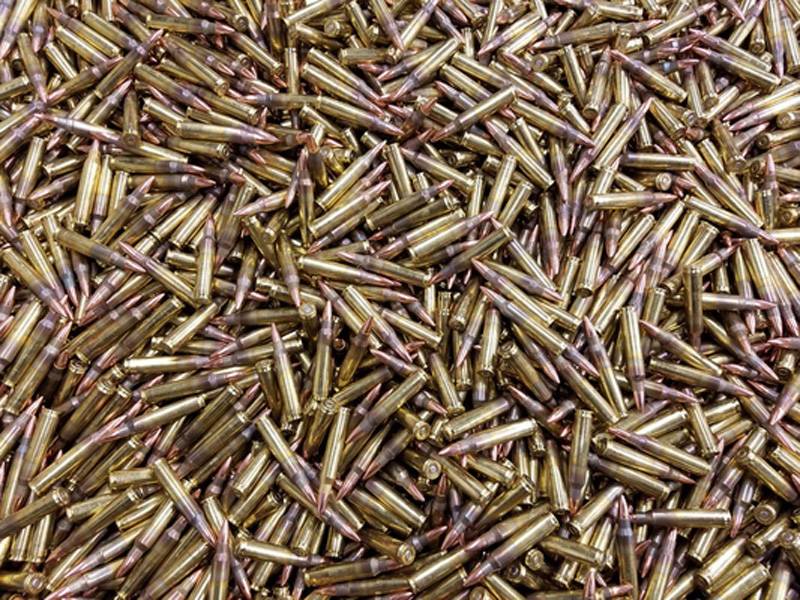
The cartridge 300BLK practically provides terminal ballistics of caliber 7.62x39 mm and the effectiveness of caliber 5.56 mm
300 Blackout
The small arms market witnesses the proliferation of alternative calibers in addition to the standard NATO calibers 5.56x45 mm and 7.62x51 mm. One such alternative that is gaining increasing popularity in the world market is the .300 Blackout cartridge (300BLK), which is the equivalent of the 7.62xXNNUMX mm cartridge.
In November 2016, the Dutch special forces made an important decision to replace their existing arsenal of 416 NN XX caliber 5.56x45 mm SIG Sauer MCX XX NUMXBLK karabiners.
First of all, the Dutch naval special forces will receive one of the first known supporters of this type of ammunition, available in several versions: general purpose, lead-free thin-walled and subsonic. This decision also prompted the Army Special Forces (Korps Commandotroepen) to begin a similar rearmament process, stimulated by the new needs of modern operational space for increased mortality, both in melee fighting and in long-range fighting.
These rather significant changes were later reinforced by the USSOCOM decision adopted in March 2017 on the search for the Personal Defense Weapon (PDW) personal defense upgrade kit, which would allow the Colt Defense M4A1 mm 5.56X45 mm caliber for the 300BLK cartridge to be easily modified.
(It is worth noting that PDW is a term used in western countries for lightweight and compact weapons designed to arm servicemen of the “second line” [crews of combat vehicles, artillery calculations and others], who are not supposed to use full-size weapons need firepower that pistols cannot provide).
As required, USSOCOM seeks "... to identify potential sources within the national technology and industrial base that can provide a kit for transforming М4А1 and creating a PDW system."
The kit will include the upper receiver box and butt, as well as any special tools necessary for converting the carbine, preferably in the field. The requirement also provides for a lightweight silencer capable of being built into the flame arrester.
The requirement states that “the kit must be adapted to the lower receiver of the standard M4А1 carbine; any modification of the lower receiver should be reversible at any time. The kit must be in the 300BLK cartridge; The total weight of the system, including the lower receiver box from М4А1, should not exceed 2.5 kg. The length with the butt extended should not exceed 66 cm, and with the folded or pushed butt 43 cm, the height should not exceed 19 cm. The weapon should not lose its functionality with the folded or pushed back pushed butt. The kit should include a barrel caliber 5.56 mm; the time taken to replace the barrel chambered for 300BLK with a barrel chambered for 5.56 mm should be less than three minutes. "
USSOCOM wants to buy a total of 550 upgrade kits, which will allow the technology to be tested and evaluated in real conditions. The decision was made due to the urgent new requirements of special forces, which want to quickly switch between supersonic and subsonic cartridges in the field. The program is expected to generate interest from well-known companies such as Colt Defense, FN USA, Heckler & Koch, LWRC International and Sig Sauer.
According to experts, 300BLK ammunition is a real masterpiece: they practically provide the terminal ballistics of the 7.62x39 mm caliber and the effectiveness of the 5,56 mm caliber. Among its variants are the 300 AAC BLK cartridge from the Advanced Armament Corporation, which has been optimized for shooting from short rifles 9 inches long, designed for conducting close combat.
In the global ammunition market, the .300 Blackout cartridge (300BLK), which is the equivalent of the 7.62xXNNXX mm cartridge, is becoming increasingly popular.
.338 Norma Magnum
Moving in the direction of increasing caliber, we meet the .338 Norma Magnum (300NM) cartridge, which is closely watched in the community of special operations forces. In April, 2017 of the Year, USSOCOM issued a request for proposal on its requirement for a modern Advanced Sniper Rifle (ASR) sniper rifle - an updated concept, leading to the Precision Sniper Rifle (PSR) high-precision sniper rifle program that was canceled in 2009.
The new ASR requirement provides for the search for a single weapon for a sniper, which in the shortest time can be remade for any of the three calibers: the 338NM cartridge, along with the more familiar 7.62xXNNXX mm and .51NM cartridges.
“The US government is conducting market research to identify reliable sources in the national industrial and technological base with the qualifications, experience and knowledge necessary for the successful production of the ASR system. The information obtained will allow us to determine the best procurement strategy and the availability of responsible competitive sources. ”
This news immediately followed by a previous announcement published in March 2017 of the year, which provided for the development of trunks for the modern ASR sniper rifle in 300WIN and .300NM configurations.
According to available information, USSOCOM, among other things, will also look for options for .338NM caliber cartridges on a polymer base in order to reduce the load on the fighters and, accordingly, increase their mobility.
The 338NM cartridge is also beginning to gain popularity in other types of weapons systems, including the USSOCOM requirement for the Lightweight Medium Machine Gun (LWMMG) light machine gun, which provides for the supply of 5000 of such systems for military testing and evaluation.
The request for proposals for LWMMG, published in May 2017, provides for the development of a medium machine gun with tape feeds for 338NM cartridges, which is a lightweight alternative to large-caliber machine guns of .50-cal caliber (12.7X99 mm), including М21 from the program for 3 d to go to get to you to to begin a 3-day post to become a member of 3 – issue from 2014 cent three by 95 percent newsletter, we’ve started to provide a 3 –– –– –––––––––– issue of NNMX-cal. .
According to official data, the LWMMG must be able to fire “... with a 338NM chuck with a polymer sleeve and weigh less than 24 pounds with an 24 inch barrel length. The LWMMG machine gun fire rate should be from 500 to 600 shots per minute. The weapon will be compatible with current sighting systems mounted on rail guides, with the ability to integrate more advanced fire control technology. The system should include a barrel with an integrated silencer and a barrel without a silencer, which could be swapped quickly. The LWMMG machine gun must have a light tripod and provide the stability and accuracy necessary to hit targets at extreme ranges. LWMMG should be installed in existing machine gun supports for the M240В / С. The weapon must have sufficient accuracy to hit area targets and vehicles at a distance of 2000 meters. "
GDOTS also submitted its proposal for a request for LWMMG. According to her, the likely candidate provides less return compared to traditional machine guns caliber 7.62x51 mm. However, a larger caliber allows you to penetrate a body armor with a Level III protection level over a distance of more than 1000 meters, it can also disable unarmored equipment, delivering more than 2,5 kilojoules to the target, which is four times the terminal impact of 7,62-mm ammunition .
As a source at GDOTS explained, “The next generation LWMMG will give soldiers a distinct advantage in close and remote combat. The medium machine gun LWMMG, firing the highly efficient 338NM cartridge, fills the gap between the 7.62 mm and .50 weapons and offers incomparable accuracy and lethality, while expanding its space to incredible 1700 meters. ”
This process is part of a larger USSOCOM plan, and in particular the joint Special Operations Command, to reduce the burden on combat groups by developing lighter ammunition.
“The command is looking for ammunition that would weigh at least 30 percent less than the current general cartridges from 5.56 mm to 12.7x99 mm,” said his spokesman, also pointing to the requirement for a non-toxic cartridge. “The command is also looking for a lead-free and non-toxic alternative to the current stockpiles of training ammunition, including a polymer training cartridge of a short-range, blank cartridge and marking cartridges.”
Cartridges .300 Whisper Swiss P RUAG in a cut
LSAT technology
Such a strategy is determined by processes occurring throughout the small arms industry, including Textron Systems. As part of the concept of Lightweight Small Arms Technology (LSAT), she actively seeks to invest in lighter weapon systems and ammunition, including telescopic options.
The company is so confident in the future of these solutions that it introduced a family of telescopic systems at SOFIC 2017 to further promote the modularity and scalability of lighter systems in the field of small arms.
A representative from Textron spoke about the new light and medium machine guns with Cased Telescoped (CT) 5.56x45 mm and 7.62x51 mm telescopic cartridges (photo below), as well as a carbine chambered for CT 6.5 mm. “When it comes to the optimal equipment of a soldier, then definitely“ less means better. ” The next-generation weapons and ammunition of this type have 40 less weight, can improve mobility, increase survivability and reduce supply. We recently evaluated the applicability and capabilities of our 5,56-mm light machine gun and ammunition for it, it confirmed the technological readiness, characteristics and advantages associated with a smaller mass of this system, as well as the possibility of transferring technical solutions to the 7,62 caliber system mm. ”

Field tests include shooting more than 100 thousands of 5,56-mm telescopic (ST) cartridges, which are currently at the seventh level of technological readiness (development of a prototype). The test series is conducted by the battle lab at Fort Benning, as well as by the Army Combat Combat Capability Integration Center. In addition, USSOCOM conducted live-fires in Florida, to which special command of the Navy showed special interest.
This weapon system was also demonstrated at the Swedish Land Warfare Principles Development Center, where the new machine gun competed with the M249 Squad Automatic Weapon (SAW) machine gun of 5.56xXNNXX mm in accuracy, mobility and operational reliability.
Normal cartridge (left) and telescopic (right)
As explained by a representative of Textron, “The results showed that to perform a firing task 5,56-mm machine gun with telescopic cartridges need 30% less cartridges; he showed the best accuracy in 20% and called for soldiers' approval for ease of maintenance, trigger work, reduced recoil and control of the line of shots. ”
Light Machine Gun ST Light Machine Gun was also tested in the units of the Command of the special forces of the sea. The CT Light Machine Gun and the corresponding ammunition weigh in on the 40 percent less compared to the M249 and existing ammunition, while the medium machine gun on the CT Medium Machine Gun weighs in on the 37 percent less than the existing version of the M240L.
Light machine gun 5.56 mm CT Light Machine Gun
The company Textron also confirmed that the 7.62-mm machine gun ST Medium Machine Gun, currently on the fifth level of technological readiness, will take part in the experiment "Expeditionary Warrior of the American Army 2018".
“Our intention is to make the weapon as easy as possible and to improve its capabilities - these tests and continuous improvement confirm that we will achieve these goals,” said a spokesman for Textron.
Version SBR rifle MCA without a silencer. When firing 300 BLK supersonic cartridges, the rifle is easier to control
6.5 mm
Textron's 6,5-mm ST-rifle, which was first shown at the bottom of the Marine Day 2016 Marine Corps, also represents the potential for expanding the CT concept with the further adoption of alternative calibers.
After studying this concept in 2014, the company came to the following conclusions: The 6.5-mm CT-carbine has a total weight of up to 4 kg and can be loaded with a magazine for 20 cartridges. Also, the weight of his CT-ammunition decreased by 40 percent, as is the case with cartridges caliber 5.56-mm and 7.62-mm.
The Textron company stated that the 6.5mm CT cartridge has a three-fold higher initial speed compared to the existing 5.56X45 mm general ammunition, including the М855А1, thereby "providing special forces and close combat units with a significant increased lethality with minimal weight gain".
Textron 6,5-mm ST-karabiner
All of these indicators were confirmed on extended tests conducted by the Research and Development Development Command (RDECOM) in April 2016 of the year, during which the lethality of 6.5 caliber mm cartridges of various options, including general and CT, was determined.
Official results showed that the 6.5 mm cartridge retains its optimal ballistic characteristics, including the speed of 370 m / s at a distance of 1000 meters. According to these data, the characteristics of the cartridge exceeded those of a larger caliber 7.62x51 mm by about 10 percent. Also, the data obtained show that CT 6.5mm cartridges exceeded the specifications of the M855А1 5.56x45 mm cartridge regarding speeds at distances up to 1200 meters.
6.8 mm
Meanwhile, the industry offers an 6.8 mm caliber cartridge as an alternative to the NATO standard 5.56x45 mm cartridge. Similar to the alternative 6.5 caliber mm cartridge, the 6.8x43 mm cartridge slightly increases the combat load in terms of mass, but also gives a corresponding increase in range and power of action.
Options include the Remington Special Purpose Cartridge (SPC) 6,8 cartridge, developed by Remington Arms as an intermediate solution between the NATO standard 5.56 mm and 7.62 mm cartridges. A company representative noted that the existing 5.56 mm assault rifles can be easily upgraded to fire an 6.8 mm cartridge, and this will significantly reduce the huge logistic costs associated with purchasing additional weapons systems.
The 6.8 mm chuck, developed in collaboration with USSOCOM, provides the optimal balance between speed at the final part of the trajectory and ballistic characteristics. According to Remington, the cartridge has an initial speed of 800 m / s, the bullet weighs 7,45 gram. This is achieved by equipping a shorter sleeve with a larger supply of gunpowder as compared with existing 5.56x45 mm ammunition. The ballistic tests also showed that up to the maximum range of 500 meters, the ballistic characteristics are comparable with the ballistic characteristics of the 7.62x51 mm cartridge, but the recoil force is less.
However, experiments have shown that at distances greater than 500 meters, the ballistic effect and speed begin to decline sharply, especially when firing from short barrels of carbines intended for close combat. However, a company spokesman said that the SPC patron was also adopted by the special forces of Jordan and Saudi Arabia.
Alternative solutions include the 6.8-mm cartridge from the Serbian Prvi Partisan; 6.8 SPC by Barrett; 6.8 Bison Subsonic Platform from Bison Armory; and Federal Ammunition 6.8-mm cartridge, originally developed for the SIX8 assault rifle from LWRC International, which was developed in close collaboration with USSOCOM. According to LWRC International, gas piston assault rifles of the SIX8 series with short piston strokes were specifically designed to be fired with the 6.8xXNNMX mm cartridge developed as part of the advanced rifle cartridge program.
“Its main goal was to eliminate the deficiencies of the NATO patron 5.5x45 mm regarding the characteristics in the final segment with minimal weight gain. And it happened because the cartridge used a heavier bullet with excellent accuracy, which delivers more energy at all effective ranges, said a company representative. - Until now, the main drawback of using the 6.8x43 mm cartridge in the M4 type weapons was the lack of reliable magazines. Therefore, when we created the SIX8 family of weapons, we started with the store. In cooperation with Magpul, we created the first polymer shop chambered for 6.8 mm. Based on the store, we designed the SIX8 platform with maximum reliability and improved ergonomics. The upper and lower receiver boxes were designed so that they could accept a slightly larger polymer magazine with an improved feed geometry for the 6.8 mm chuck. In addition, we asked Federal Ammunition to develop a new line of inexpensive 6.8 cartridges with good performance for the commercial, military, and law enforcement agencies, resulting in an excellent medium-range cartridge 6.8x43 mm. ”
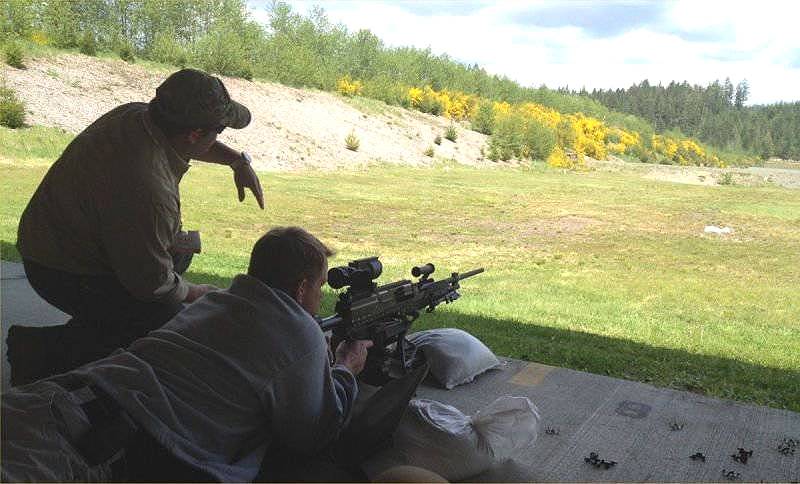
Lightweight Medium Machine Gun, chambered for .338 Norma Magnum, has excellent capabilities; potential breakthrough for mobile infantry
9 mm
The future of the 9x19 mm cartridge - the preferred caliber for short barrels and PDW class weapons, as well as melee weapons - has now become quite clear after a prolonged application for the Modular Handgun System (MHS) modular pistol, which dates back to September 2014.
As part of this separate program for replacing Beretta M9 9x19 mm pistols, several alternative calibers were considered, including .40 and .45, until later it was decided to continue with the .45 cartridge.
In January 2017, the contract management of the American Army issued a contract to SIG Sauer worth up to 80,2 billion dollars for the development and presentation of the MHS concept. The contract included a pistol, which received the designation HM17, as well as all the accessories and ammunition.
According to the original requirement, MHS is a “... full-size and compact pistol or just one pistol, which should replace the existing models of handguns in the arsenal of the American army. It should use commercial technology to eliminate the gaps and shortcomings of current weapons, it should be able to counteract current and future threats. ”
Despite statements by representatives of the army, including the chief of staff of the ground forces, who emphasized that the MHS program should bring qualitative changes to ground combat operations, the FBI’s “eye” was for this program, where it was confirmed that 9 mm was also their future choice. based on the results of advanced tests of weapons of different calibers.
The outlook for the 9x19 mm caliber is also quite bright, as indicated, for example, by the desire of the Danish army, which wants to replace the existing models with next-generation handguns for the 9x19 mm. According to the Danish Defense Procurement Organization, the armed forces want a semi-automatic pistol chambered for 9x19 mm and replace the M / 49 pistols in service (with 1949 of the year). The winner must be announced in November 2018.
German accuracy
The German company for the production of ammunition MEN presented its entire line of ammunition for hand weapons at several exhibitions, for example, TeutoDefence Defense Days and DSEI. MEN has developed a lead-free cartridge caliber 5.56 mm NATO standard for indoor shooting. The LFI cartridge, made of brass and bronze, has characteristics similar to those of a standard cartridge, but at the same time it causes significantly less damage to the equipment of shooting ranges and shooting ranges.
Dutch sniper firing a .50 caliber Barrett sniper rifle during practical combat shooting at the Trident Juncture exercises
Russian alternatives
Finally, it is necessary to pay special attention to small arms ammunition created in Russia, where companies such as the Kalashnikov Concern periodically present the next generation weapons systems designed for special forces.
At the end of 2016, the company introduced several variants of an assault rifle for the standard 5.45x39 mm cartridge in order to meet the requirements of the Russian command of special operations and the concept of a promising combat equipment kit “Warrior”.
First of all, it is an AK-12 machine gun, which is also available for the cartridge 7.62x39 mm, which significantly increases the damaging effect of the weapon. The AK-12 machine gun is also available in the version for the NATO cartridge 5.56x45 mm, indicating that the company intends to promote it in Western countries.
The AK-15 machine gun, which was also considered by special forces units, is, like the AK-12, a weapon system chambered for the 7.62x39 mm cartridge, but differs in a freely hung barrel to improve accuracy. Also, special forces and other combat units have PDW weapons of caliber 5.45x39 mm, as well as a two-medium APS machine gun of caliber 5.66xXNNUMX mm developed by the KBP company, which can also shoot under water.
With the exception of special operations forces with their special requirements, the armed forces of many countries will be reluctant to switch to alternative small arms ammunition that does not meet NATO standards until the United States takes the lead.
The huge costs associated with the procurement of a large number of pistols, rifles, carbines, accessories and ammunition - this is a huge responsibility of government structures, especially in modern conditions, when there are problems with funding.
However, the development of telescopic ammunition and other alternative calibers will in the medium and long term significantly reduce the cost of small arms and simplify the life of government officials responsible for its procurement.
Materials used:
www.smallarmsreview.com
www.baesystems.com
www.socom.mil
www.gd-ots.com
www.ruag.com
www.textron.com
www.remington.com
www.sigsauer.com
www.men-defencetec.de
kalashnikov.com
www.wikipedia.org
en.wikipedia.org
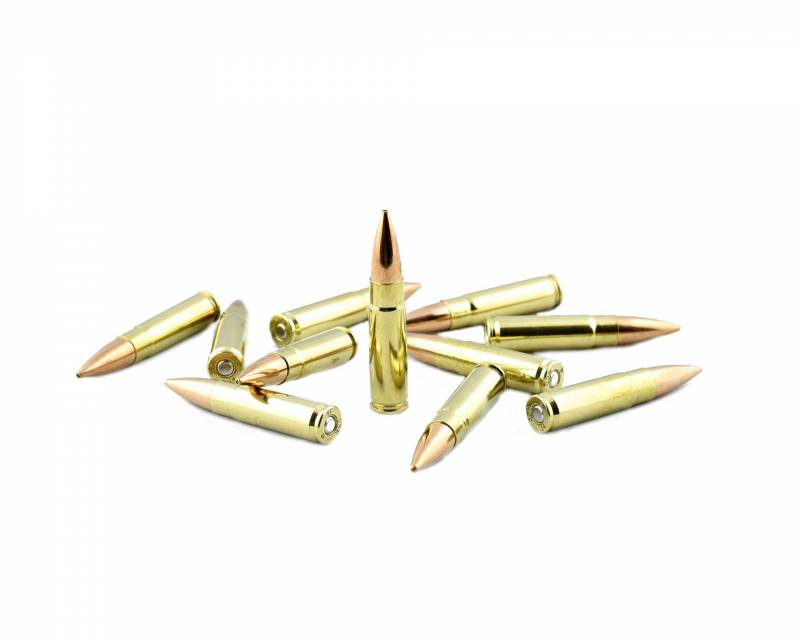
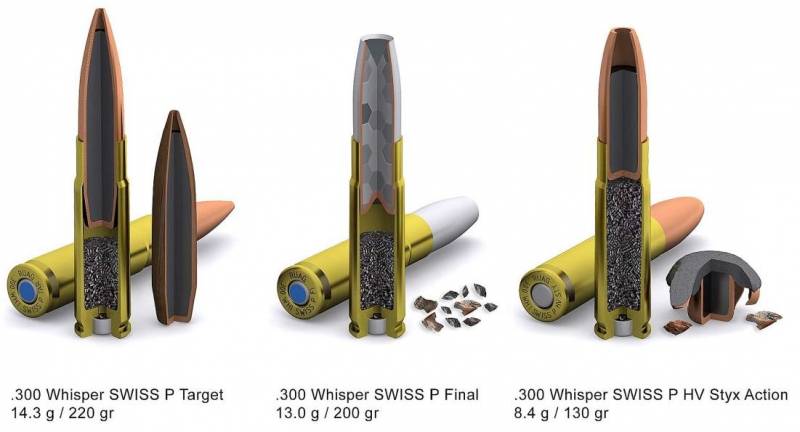
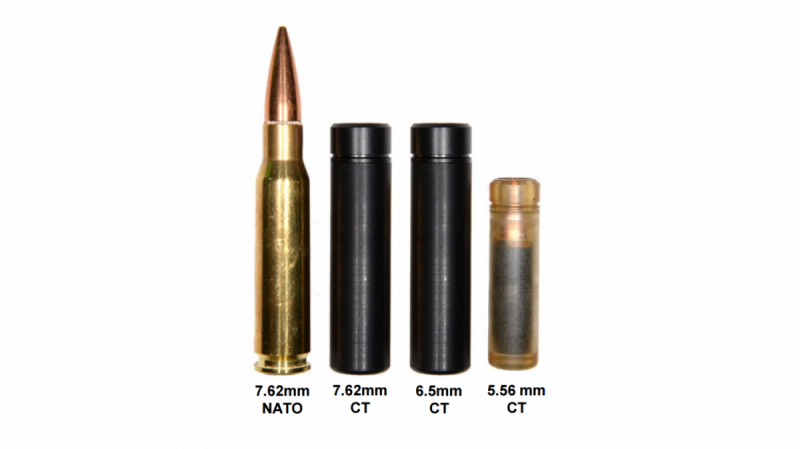
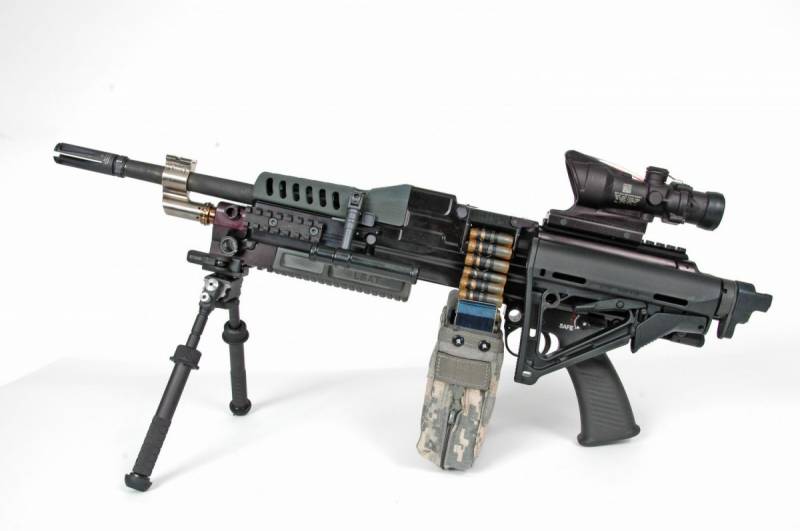
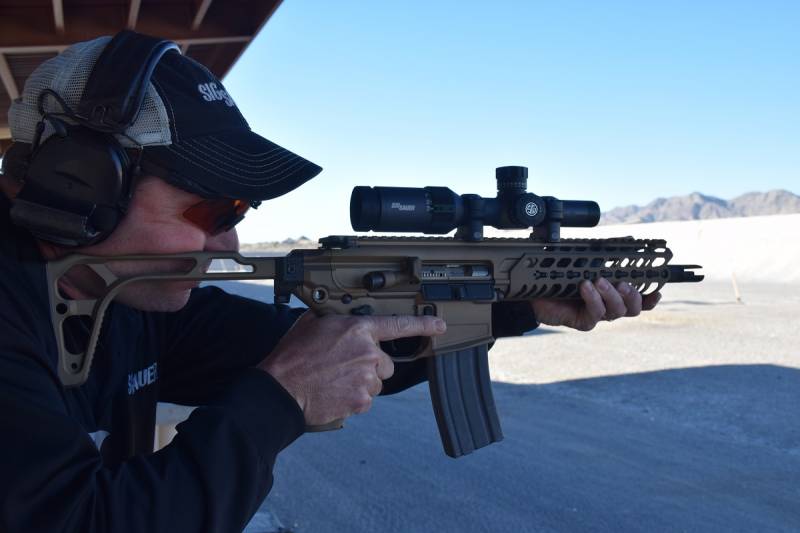
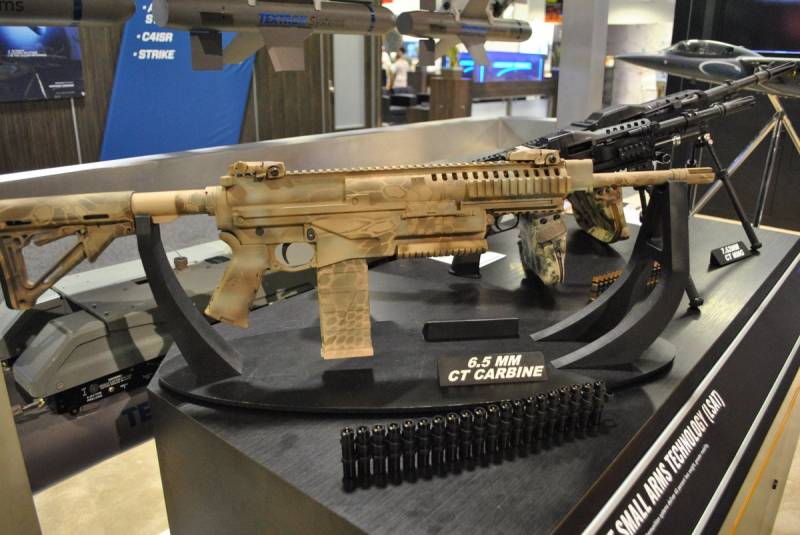
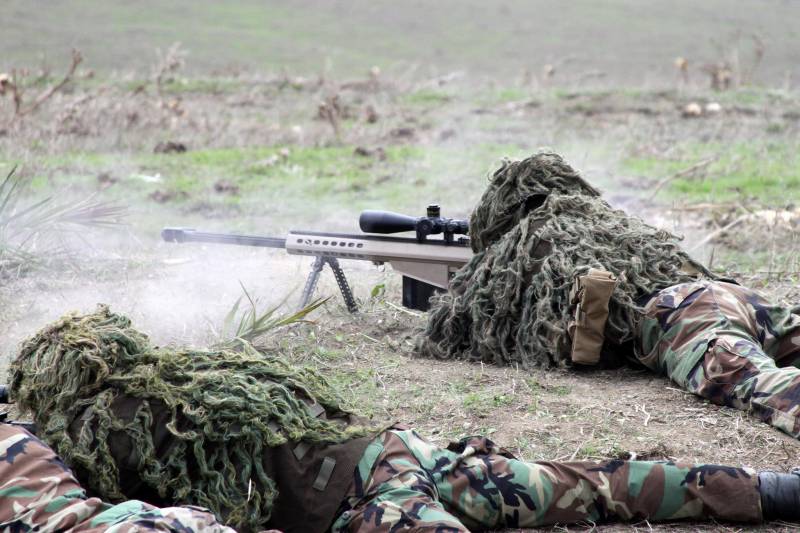
Information